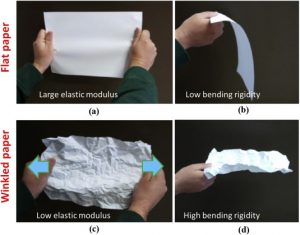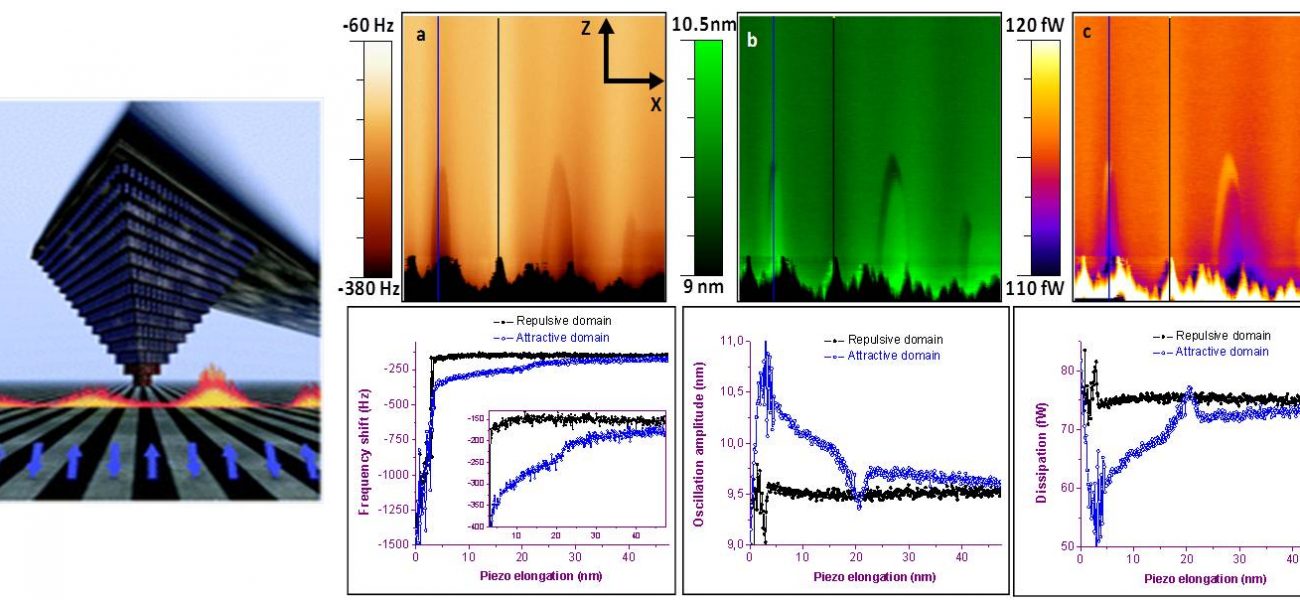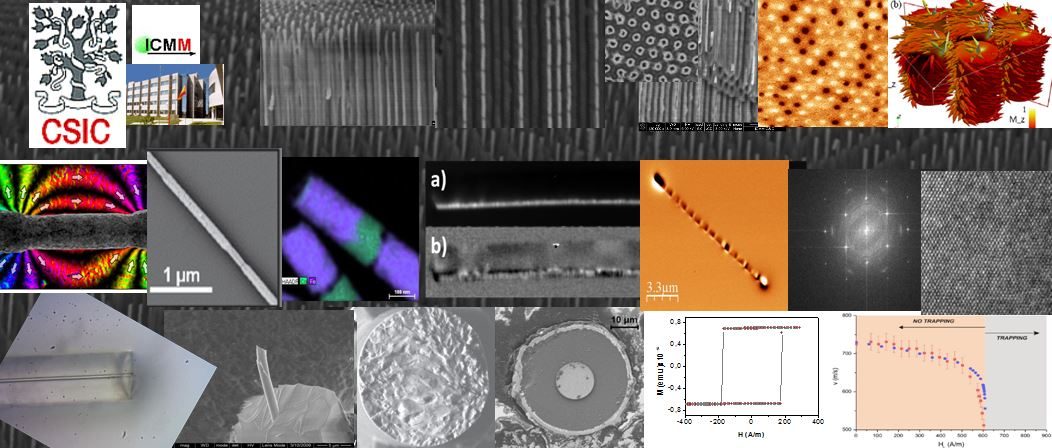|
|
The effect of rippling on the mechanical properties of graphene
Guillermo Lopez-Polin, Cristina Gomez-Navarro, Julio Gomez-Herrero
Nano Materials Science 2021
DOI: https://doi.org/10.1016/j.nanoms.2021.05.005
Graphene is the stiffest material known so far but, due to its one-atom thickness, it is also very bendable. Consequently, free-standing graphene exhibit ripples that has major effects on its elastic properties. Here we will summarize three experiments where the influence of rippling is essential to address the results. Firstly, we observed that atomic vacancies lessen the negative thermal expansion coefficient (TEC) of free-standing graphene. We also observed an increase of the Young’s modulus with global applied strain and with the introduction of small density defects that we attributed to the decrease of rippling. Here, we will focus on a surprising feature observed in the data: the experiments consistently indicate that only the rippling with wavelengths between 5 and 10 nm influences the mechanics of graphene. The rippling responsible of the negative TEC and anomalous elasticity is thought to be dynamic, i.e. flexural phonons. However, flexural phonons with these wavelengths should have minor effects on the mechanics of graphene, therefore other mechanisms must be considered to address our observations. We propose static ripples as one of the key elements to correctly understand the thermomechanics of graphene and suggest that rippling arises naturally due to a competition of symmetry breaking and anharmonic fluctuations.

Prof. Manuel Vazquez
The IEEE Magnetics Society Distinguished Service Award is established to honor outstanding service to the Magnetics Society
Prof. Manuel Vazquez from the Institute of Materials Science of Madrid, CSIC, has been granted the 2021 Distinguished Service Award.
The citation reads: For tremendously strengthening the IEEE Magnetics Society outreach worldwide and dedicated efforts to engage new people in service to the society

Magnetic Configurations in Modulated Cylindrical Nanowires
Cristina Bran, Jose Angel Fernandez-Roldan, Rafael P. del Real, Agustina Asenjo, Oksana Chubykalo-Fesenko and Manuel Vazquez
Nanomaterials 2021, 11, 600
DOI: doi.org/10.3390/nano11030600
Cylindrical magnetic nanowires show great potential for 3D applications such as magnetic recording, shift registers, and logic gates, as well as in sensing architectures or biomedicine. Their cylindrical geometry leads to interesting properties of the local domain structure, leading to multifunctional responses to magnetic fields and electric currents, mechanical stresses, or thermal gradients. This review article summarizes the work carried out in our group on the fabrication and magnetic characterization of cylindrical magnetic nanowires with modulated geometry and anisotropy. The nanowires are prepared by electrochemical methods with precise control over geometry, morphology, and composition. Different routes to control the magnetization configuration and its dynamics through the geometry and magnetocrystalline anisotropy are presented. The diameter modulations change the typical single domain state present in cubic nanowires, providing the possibility to confine or pin circular domains or domain walls in each segment. The control and stabilization of domains and domain walls in cylindrical wires has been achieved in multisegmented structures by alternating magnetic segments of different magnetic properties or with non-magnetic layers.

This article reviews the most significant investigations carried out by the GNMP group on cylindrical magnetic nanowires with modulated geometry and anisotropy. Such modulations promote the occurrence of stable magneto-chiral structures and provide further information for the design of cylindrical nanowires for multiple applications.
 Magnetoelectric Polymer-Based Nanocomposites with Magnetically Controlled Antimicrobial Activity Magnetoelectric Polymer-Based Nanocomposites with Magnetically Controlled Antimicrobial Activity
Margarida M. Fernandes, Pedro Martins, Daniela M. Correia, Estela O. Carvalho, Francisco M. Gama, Manuel Vazquez, Cristina Bran and Senentxu Lanceros-Mendez
ACS Appl. Bio Mater. 2021, 4, 1, 559–570
DOI: doi.org10.1021acsbm.0c01125
The emergence of antimicrobial resistance is considered a public health problem due to the overuse and misuse of antibiotics which are losing efficacy toward an increasing number of microorganisms. Advanced antimicrobial strategies via development of alternative drugs and materials able to control microbial infections, especially in clinical settings, are urgently needed. In this work, nanocomposite films were developed from piezoelectric PVDF polymer filled with nickel nanowires to control and enhance the antimicrobial activity via the application of a magnetic stimulus. The material was achieved through crystallization of PVDF upon incorporation of anisotropic and negatively charged Ni nanowires in the polymeric matrix. The nanocomposites have shown to possess antimicrobial properties which was considerably boosted through the application of a magnetic field. More than 55% of bacterial growth inhibition was obtained by employing controlled dynamic magnetic conditions compared to only 25% inhibition obtained under static conditions. This work demonstrates a proof-of-concept for materials able to boost on demand their antimicrobial activity and opens the room for applications in novel medical devices with improved control of healthcare-associated infections.

This work has been performed in collaboration between the GNMP group at ICMM/CSIC and the University of Braga in Portugal profiting of their respective expertise in magnetic nanowires and polymers for biomedical applications.
|
|






 Magnetoelectric Polymer-Based Nanocomposites with Magnetically Controlled Antimicrobial Activity
Magnetoelectric Polymer-Based Nanocomposites with Magnetically Controlled Antimicrobial Activity 